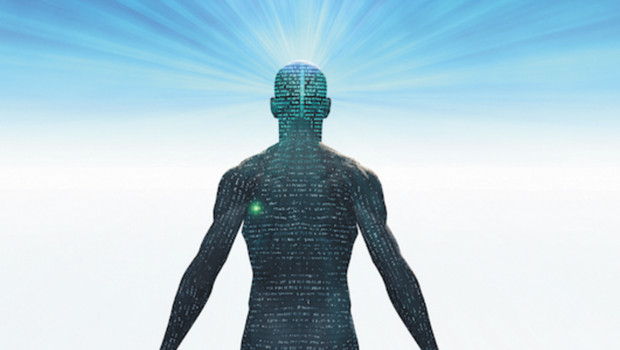by Kelly Martinsen
“Everybody is under pressure from themselves or from life circumstances, and everybody has some degree of rage in their unconscious.”—Dr. John Sarno, author of Healing Back Pain: The Mind-Body Connection.
In 1991, Dr. John Sarno—the luminary behind the discovery of tension myositis syndrome and how best  to treat it—wrote his revolutionary, best-selling book, Healing Back Pain: The Mind-Body Connection. This was the first time the general public was introduced to and informed about this condition in which a person’s subconscious mind has a physiologic impact on various pain pathways.
to treat it—wrote his revolutionary, best-selling book, Healing Back Pain: The Mind-Body Connection. This was the first time the general public was introduced to and informed about this condition in which a person’s subconscious mind has a physiologic impact on various pain pathways.
In his book, Sarno, a former professor of clinical rehabilitation medicine at New York University School of Medicine and former attending physician at the Rusk Institute of Rehabilitation Medicine at New York University Medical Centers, details accounts of various patients that came to him seeking relief from back pain, often after having exhausted both Eastern and Western treatment options. His diagnosis for many of them was tension myositis syndrome, also referred to as tension myoneural syndrome, and most recently by Sarno as mind-body syndrome, or MBS. The “tension” refers to the emotional tension that exists and is the catalyst for the pain and tightness in the muscles. The “myositis” or “myoneural” refers to muscles and nerves that are involved. The “syndrome” refers to the fact that symptoms from MBS/TMS can be varied and variable.
Since 1991, the medical pioneer has written two more books on the subject; and while at
93 years of age he is now retired, other clinicians have continued on his path, writing books, creating programs and hosting websites—including MindBodyMedicine.com and UnLearnYourPain.com—in support of those with MBS/TMS.
 But why? Why would our unconscious mind cause pain in our body? Sarno and his colleagues (and now an entire MBS/TMS community) believe that the unconscious does this so as to create a focus on the body and to move the conscious mind away from unconscious feelings that may be too difficult for a person to face. The MBS/TMS community refers to these feelings as “unconscious rage”—often thought to be a result of childhood trauma or about the unfairness of life; there is even what Sarno refers to as “a good guy rage,” concerning one’s own pressure to be good all the time—to be perfect.
But why? Why would our unconscious mind cause pain in our body? Sarno and his colleagues (and now an entire MBS/TMS community) believe that the unconscious does this so as to create a focus on the body and to move the conscious mind away from unconscious feelings that may be too difficult for a person to face. The MBS/TMS community refers to these feelings as “unconscious rage”—often thought to be a result of childhood trauma or about the unfairness of life; there is even what Sarno refers to as “a good guy rage,” concerning one’s own pressure to be good all the time—to be perfect.
When it comes to MSB/TMS, the most important part of this syndrome to realize is that this all happens unconsciously. This creation of pain is completely on a subconscious level. The patient is not consciously aware of or in control of the pain. The reason that the subconscious mind is facilitating a pain response, according to Sarno, is because the subconscious mind believes physical pain is less painful than allowing the conscious mind to think certain thoughts and feel certain emotions, or even to consciously admit to having these thoughts and emotions.
In lmmaker Michael Galinsky’s yet-to-be released documentary, All the Rage, folks like Larry David, John Stossel, Howard Stern, Jonathan Ames and Sen. Tom Harkin all found relief utilizing Sarno’s methods after exhausting other modalities. “Let’s be clear, this is not ‘all in your head’—not in any way, shape or form; this pain is real!” says Eileen Newman, who is also featured in the documentary. “No, it isn’t in your head; although, it is created by what is in your head.”
Yet, rage can be misconstrued. Newman herself agrees: “Rage? I thought I have nothing to be ‘rageful’ about. I have a great life, had a wonderful childhood, have beautiful kids, have a job I am thankful for and time to volunteer, have two parents who are still alive into their ‘80s— why would I be rageful?” Yet, when Newman began Sarno’s program and started journaling her feelings daily, she was shocked to see the resentment she had. She began to recognize both her conscious resentment and her buried rage. The resentment was the “conscious” feeling—but that was really just the tip of the iceberg. When she tapped her subconscious, she admitted she resented her own personal choice to be perfect. She also resented her children who seemed to take advantage of her. “I thought what kind of monster is rageful because her baby won’t stop crying or her elderly parents need a visit. My rage was shameful, and to be honest, I could see why I didn’t want to face that!”
In the 25 years since Sarno published his first book, doctors are discovering that there are multiple conditions that are the result of the mind-body connection. in Sarno’s most recent book, The Divided Mind, and in Dr. Howard Schubiner’s book, Unlearn Your Pain, the ailments that have been re-diagnosed as MBS/TMS run the gamut from bromyalgia to irritable bowel syndrome to gastroesophageal reflux disease to interstitial cystitis and more. One common characteristic of MBS/TMS is that different pains and maladies occur at different times or even simultaneously in a person’s life.
Dr. Andrea Leonard-Segal, of the George Washington University Center for Integrative Medicine, and one of Sarno’s colleagues, explains that when a physician takes an in-depth history, performs a physical examination, and rules out other diseases with appropriate tests, then a diagnosis of MBS/TMS can be made. “We don’t know exactly how the feeling of subconscious rage communicates chemically with the body to then cause pain, diarrhea, a skin rash, or other physical responses, but we do know that it does. An example of conscious emotions having a physiologic effect is the red cheeks and warm feeling we have when we get embarrassed. We don’t yet know how the feeling of embarrassment stimulates the blood vessels to turn our cheeks red, but we know that it does.”
Leonard-Segal explains that a careful medical review is necessary for everyone with chronic symptoms to rule out a serious medical condition. If a person is suffering from chronic symptoms that doctors have been unable to diagnose or treat successfully, it is possible he or she is suffering from MBS/TMS. “But it is important,” she says, “that you are diagnosed by a physician. Once patients receive the diagnosis, many will get better soon simply with an education about the condition and coaching to help them overcome their fear of their physical symptoms. When this is not the case, it is advisable to seek care from a psychologist.”
Leonard-Segal says that journaling may also be helpful as well as reading all of Sarno’s books. “Some patients respond better after reading one book and some after another,” she explains. “Dr. Sarno’s works are the basis of everything that anyone else has written. He really is a genius and a very courageous physician because his work was swimming upstream against doubt and closed mindedness in the medical community. It is only in recent years that there is more of an openness occurring in the medical community, but there is a long way to go.”
Kelly Martinsen is the publisher of Natural Awakenings Long Island. Connect with her at [email protected].





